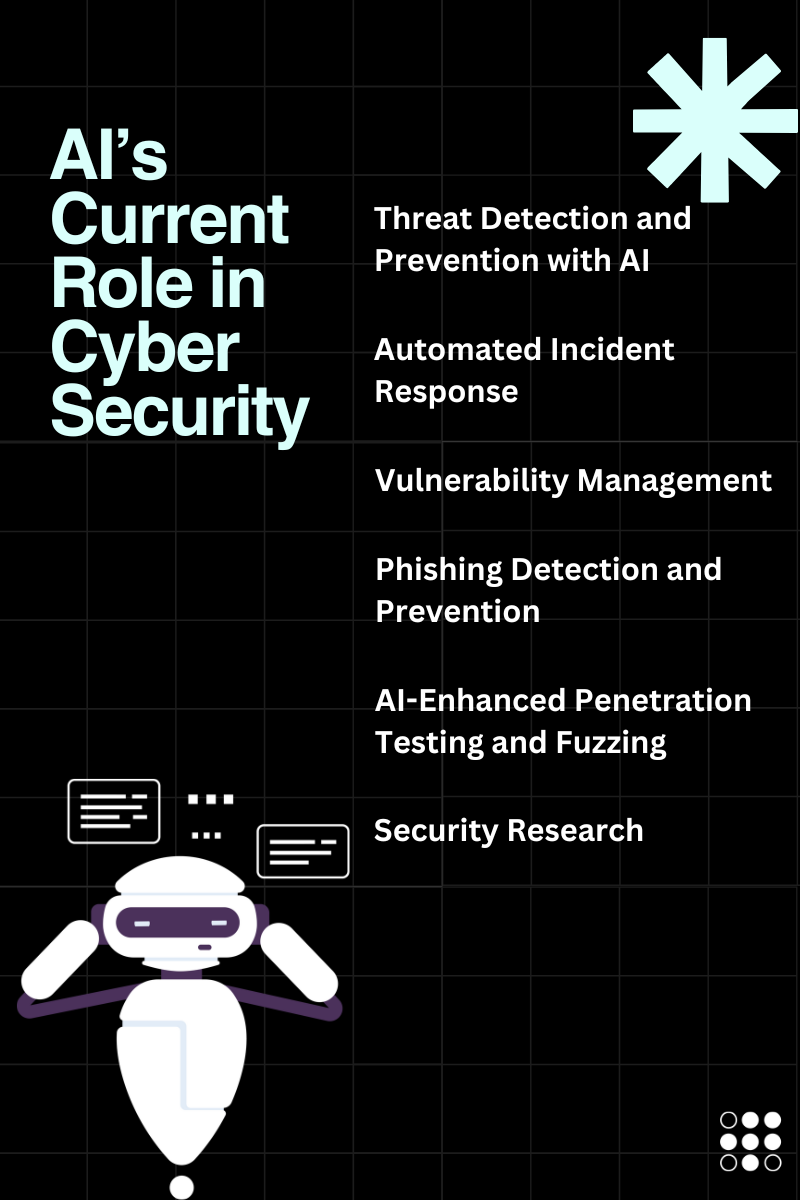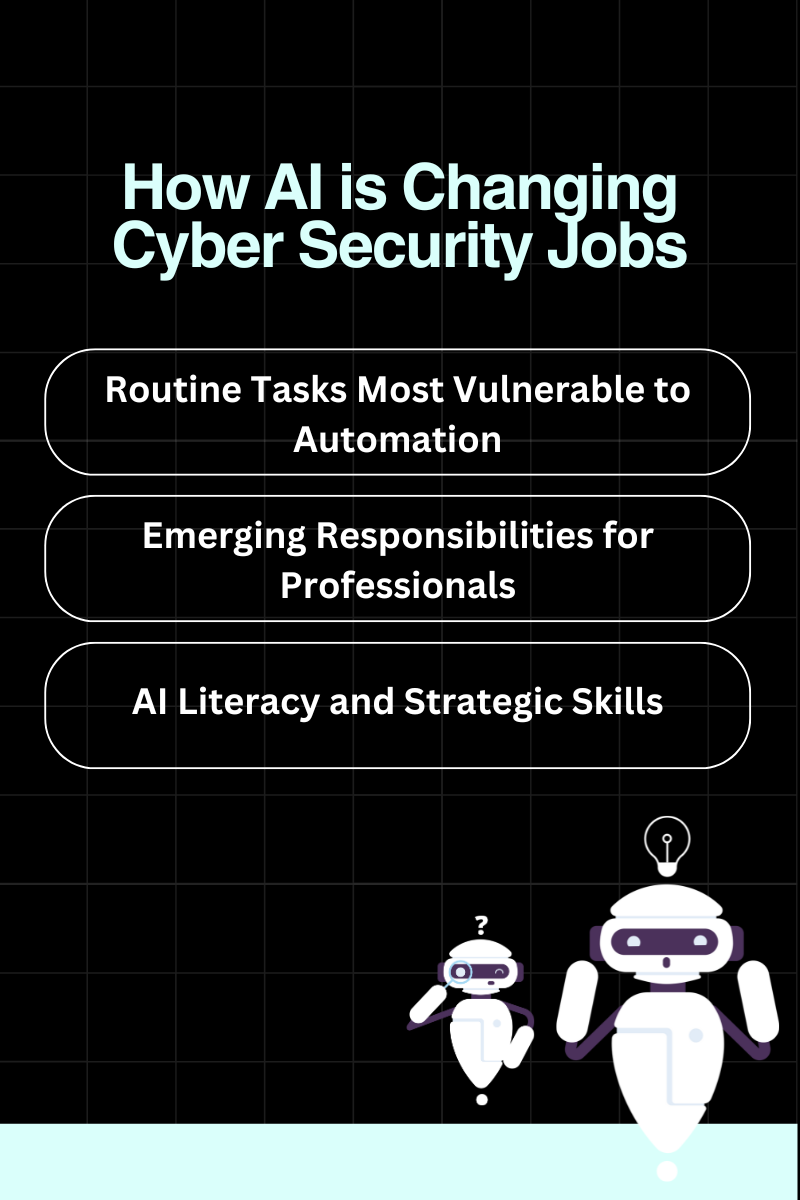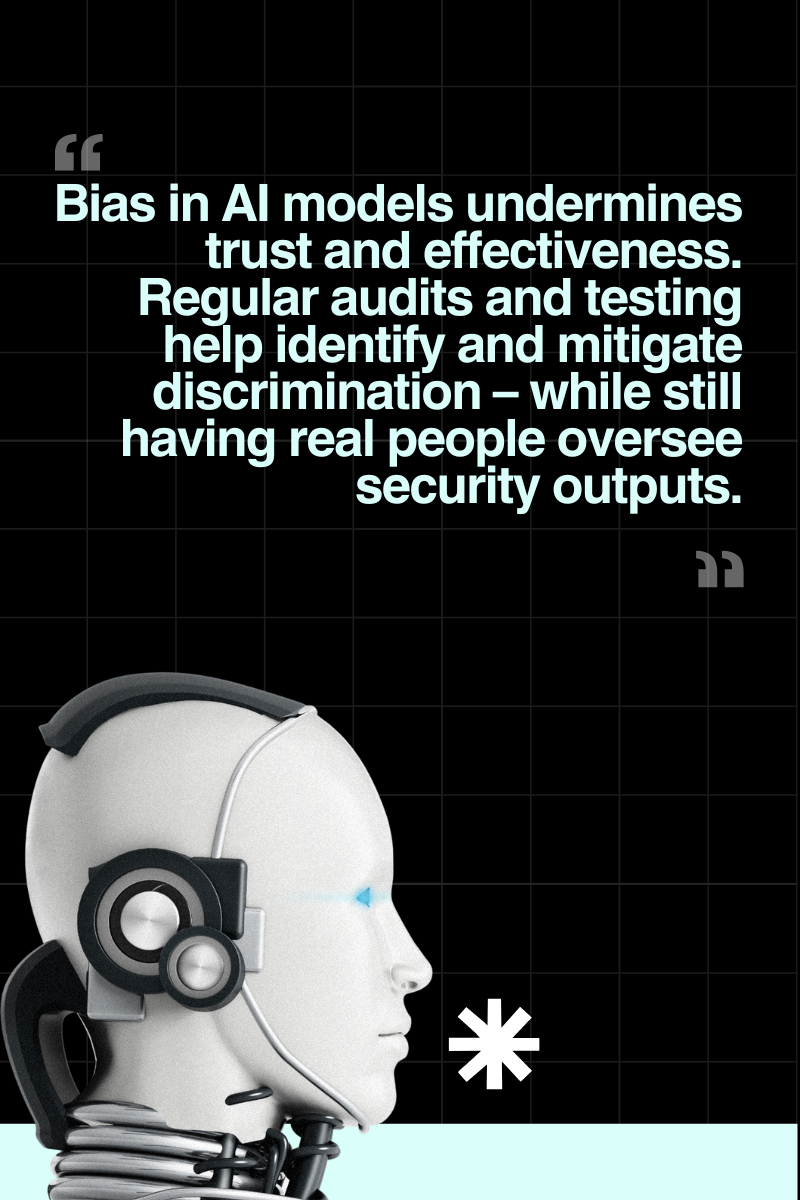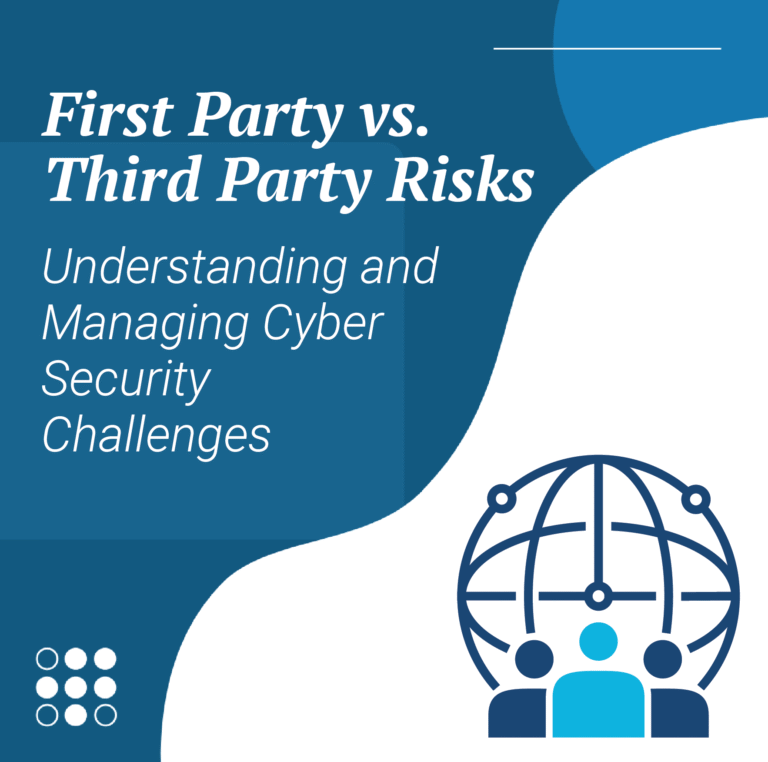Introduction to AI and Cyber Security
Understanding the Question: Will Cyber Security Be Replaced by AI?
Will Cyber Security Be Replaced by AI? As artificial intelligence (AI) continues to evolve, a recurring concern in cyber security (a subfield of information security) is whether AI will eventually replace human professionals. Headlines and tech predictions often spark fear about automation displacing jobs, but the reality is more nuanced. AI has become an inescapable part to many cyber security components, but as we all know, it cannot truly replace human expertise.
Why AI Integration Is Heavily Impacting Cyber Security
Cyber security threats are growing in scale and sophistication, with distinct new angles thanks to AI. Attackers are deploying AI-powered phishing campaigns (that are eerily effective at making scam emails look more authentic than we’re all used to), automated malware, and social engineering attacks. At the same time, organizations face talent shortages, with an estimated 3+ million unfilled cyber security positions globally. Those two realities combined will give the bad guys better success rates and more competitive advantages, while the good guys will be scrambling to catch up.
AI’s Current Role in Cyber Security

Threat Detection and Prevention with AI
While the above remains true, cyber security has benefitted from the development of AI within security tools. Some AI-powered systems are raising the bar with scanning vast datasets to identify anomalies, ultimately to indicate potential threats. For example, behavioral analytics tools can detect unusual login locations, spikes in data transfers, or suspicious account activity. By flagging these patterns faster, AI enables security teams to act quicker and more accurately than traditional non-AI monitoring. All of which help organizations avoid negative impacts from cyber incidents, including financial, operational and reputational harm.
Automated Incident Response
Incident response can often involve isolating compromised systems, blocking malicious IPs, or disabling accounts. There are available AI tools that can automate some of the associated repetitive tasks, which allows security professionals to focus on decisions that need heavier human oversight, such as investigating root causes and coordinating cross-functional mitigation efforts.
Vulnerability Management
Some AI tools enhance vulnerability management by scanning networks, identifying potential risks, and prioritizing them based on severity. This proactive approach both saves some legwork and helps ensure that critical vulnerabilities, such as exposed resources or unpatched systems, are identified promptly, reducing the organization’s exposure to attacks.
Phishing Detection and Prevention
While tools to detect possible phishing attempts aren’t new, adding AI to these tools has improved how email content, metadata, and sending patterns are analyzed. Given how the majority of incidents start with human error, which theoretically preventable, all improvements to phishing detection tools likely have a positive impact on organization’s risk levels.
AI-Enhanced Penetration Testing and Fuzzing
AI-powered tools assist penetration testers in automating attack simulations and fuzz testing. This accelerates the discovery of system vulnerabilities while providing insights that allow human testers to focus on strategic, high-impact assessments.
Security Research
Security researchers utilize AI to test exploits faster than otherwise possible. AI is also capable of creating new exploits when properly trained by qualified researchers. “White hat” security researchers use what they learn with AI to inform the larger security community and improve defenses.
The flip side involves criminals conducting the exact same type research but using what they learn for harm instead of for good.
AI Cannot Replace Human Judgment
Limitations in Handling Zero-Day Attacks
AI heavily relies on historical data to identify patterns and predict threats. Novel exploits, such as zero-day vulnerabilities, present a challenge because there is no precedent for AI to learn from. Real people and industry professionals are essential for recognizing and responding to these unknown threats in real time.
Adversarial Attacks on AI Systems
AI itself can be targeted. Attackers can manipulate AI models by feeding misleading inputs, creating false positives or negatives, or tricking systems into ignoring genuine threats. Security professionals are needed to validate AI outputs and refine models.
Biases, False Positives, and False Negatives
AI models can inherit biases from training data or misclassify events. False positives can overwhelm teams with unnecessary alerts, while false negatives may allow threats to go undetected. Continuous oversight by real people ensures AI be helpful and effective.
Complex Contexts and Human Intuition
AI cannot fully grasp context, motives, or the psychological tactics of cyber criminals. Skills like critical thinking, ethical reasoning, and strategic judgment remain exclusively human. Thus, the necessity of professionals being fully involved in all security processes needs to be constantly reinforced.
How AI is Changing Cyber Security Jobs
Routine Tasks Most Vulnerable to Automation
Tasks such as Level 1 incident response, repetitive vulnerability scanning, or writing standard SIEM alerts are increasingly automated. Jobs centered on basic reporting or repetitive documentation may see reduced demand, allowing cyber security teams to focus more on strategic and analytical work.
Emerging Responsibilities for Professionals
With AI handling routine functions, cyber security roles are evolving toward oversight, strategy, and improved AI integration. Analysts now include a focus on interpreting AI-generated insights, modeling adversarial behaviors, and improving detection processes.
AI Literacy and Strategic Skills
Understanding AI, machine learning, and predictive analytics is becoming critical. Professionals need skills in comprehensive AI oversight, data curation, model tuning, and evaluating AI outputs for real-world application.

The Rise of AI-Centric Information Security Roles
New Job Categories in AI Security
AI’s integration into security has created roles such as AI Threat Analyst, ML Security Engineer, and Adversarial ML Red Teamer. These positions require a combination of information security expertise (not just the subfield of cyber security), data science knowledge, and machine learning operations (MLOps) skills.
Responsibilities in Cyber Security
Professionals are increasingly expected to oversee AI tools, validate alerts, tune predictive models, and ensure AI behaves within ethical and operational boundaries.
Data Science and Adversarial Skills in Security
AI-centric cyber security roles often require skills in statistical analysis, model evaluation, and adversarial thinking. Professionals proficient in these areas will lead the next generation of cyber security strategies.

Ethical, Privacy, and Operational Considerations
Ensuring Privacy Compliance
AI relies on large datasets, often containing sensitive information. Compliance with regulations such as CPPA/PIPEDA is crucial. Professionals must ensure data is handled responsibly and securely.
Avoiding Bias and Fairness Issues
Bias in AI models undermines trust and effectiveness. Regular audits and testing help identify and mitigate discrimination – while still having real people oversee security outputs.
Managing Cost and Complexity
Deploying AI requires infrastructure, skilled personnel, and continuous updates. Organizations must balance AI benefits with financial and operational considerations, including oversight.
Cyber Criminals Using AI as a Tool
AI is a double-edged sword: attackers also leverage AI for phishing campaigns, malware creation, and password cracking. Security teams must anticipate AI-powered threats, while also optimizing security tools that have an AI component.
Preparing for an AI-Augmented Cyber Security Future
Upskilling in AI and Machine Learning
Cyber security professionals should pursue continuous education in AI optimization, AI oversight, and data science. Mastery of these tools ensures they remain relevant in an AI-augmented landscape, regardless of the benefits it brings.
Strengthening Soft Skills
Skills such as critical thinking, resilience, curiosity, and collaboration are essential for interpreting AI outputs, evaluating complex scenarios, and leading teams effectively.
Strategic Thinking and Proactive Defence
AI enables predictive insights, but real people must be continually involved in deciding how to act on them. Professionals must oversee AI outputs, focus on strategy, risk management, and scenario planning.
Embracing AI-Powered Tools
Integrating AI as a supportive tool enhances existing defences, automates repetitive tasks, and allows human expertise to give more focus where it adds the most value.
Conclusion: Will Cyber Security Be Replaced by AI?
Human Expertise Remains Irreplaceable
AI is transforming cyber security but will not replace human professionals or real people. Its role for now should be strictly supportive, augmenting human capabilities rather than considered a replacement for judgment, creativity, and strategic thinking.
This means that while cyber security jobs are not disappearing, they are certainly evolving (as one would expect in the industry). Professionals who adopt AI tools, know how to oversee outputs, upskill in data science and machine learning, and leverage soft skills will thrive in a landscape immersed with AI-powered tools.


